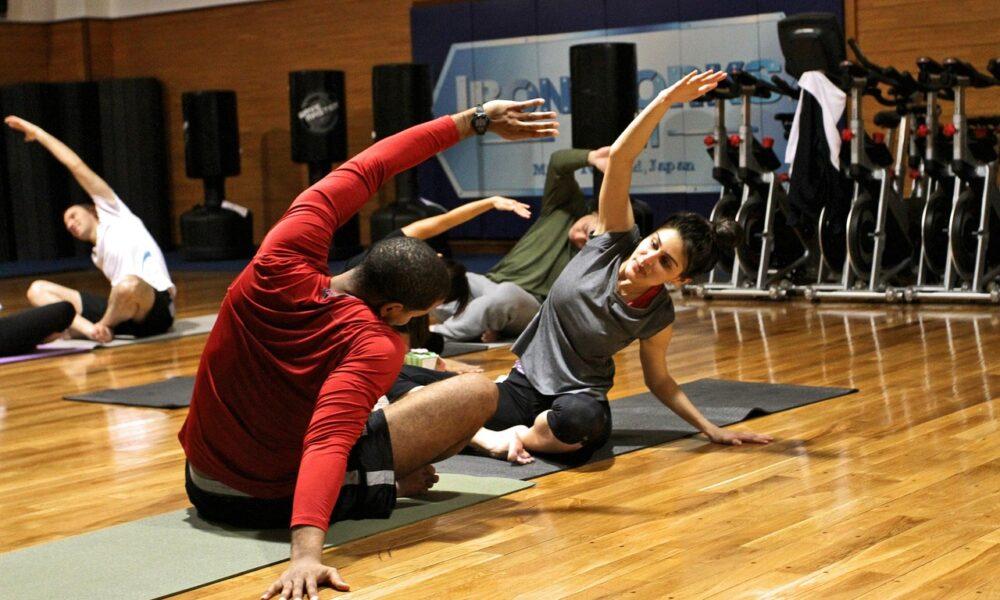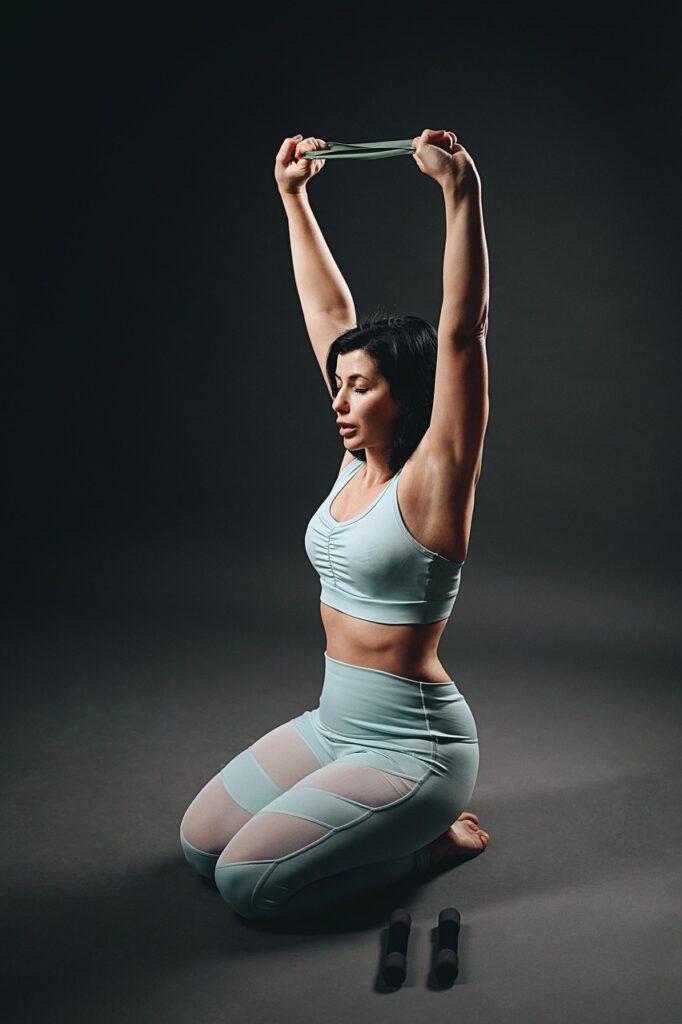
Have you ever skipped stretching exercises to do the main workout directly, or finished a challenging workout and rushed straight to the shower, skipping the stretch? You’re not alone.
Unfortunately, many of us hop directly from that treadmill or come from work and head straight to our main workout or shower. But we might miss out on one of the most critical parts of our fitness routine.
Before an intense workout, your muscles are cooler, tighter, and shorter, and your joints are stiffer. The heart rate is relatively low, and circulation is not yet optimized for an intense workout. After a workout, the muscles are usually fatigued and in pain due to the pressure placed on them. Without proper stretching, this can lead to reduced mobility, stiffness, or even injury over time.
But 10 minutes of stretching can help with muscle recovery, improve flexibility, reduce injury risk, and keep your body moving at its best.
Ready to take recovery seriously? This article explores the most effective stretches to add to your workout routine before and after intense exercise.
Before diving into stretching, it’s essential to know that it is grouped into two categories: static and dynamic stretching. Which one to perform depends on whether you want to include it as a post-workout or before the workout.
Dynamic stretching involves actively moving your muscles and joints through their full range of motion. It is best performed before a workout to warm the body, improve blood flow, and prepare the muscles for movement. Think leg swings, arm circles, or walking lunges.
Most of these stretches may mimic the activity you’re about to do, but at a lower intensity and heart rate. You can also perform them as a post-workout exercise for muscle recovery.
A static stretch involves holding a position for 15-60 seconds without movement. It’s performed after a workout to lengthen muscles, improve flexibility, and promote post-workout recovery. Examples include seated hamstring stretches or a chest-opening doorway stretch.
Here are five reasons you should stretch.
1. Improved Flexibility and Range of Motion
During stretching, you can lengthen tight muscles and loosen stiff joints. When you stretch regularly, your muscles become more flexible, allowing them to move more freely and efficiently. This reduces restrictions around joints, making movements smoother and easier.
Improved mobility leads to better posture, enhanced performance during workouts, and a reduced risk of injury.
2. Reduced Injury Risk
When muscles are tight, they’re more susceptible to strains, tears, and overuse injuries. Incorporating a structured stretching routine prepares the body for the physical demands of lifting, running, or functional workouts, preventing injuries.
Stretching increases blood circulation to the muscles, warms them up, and improves elasticity, reducing tension and the chances of sudden pulls or strains.
3. Improved Posture
Poor posture is common among lifters and desk-bound individuals. Stretching helps correct muscle imbalances contributing to slouched shoulders, forward head posture, and tight hips.
While beneficial, strength training can sometimes shorten muscle fibers if not balanced with mobility work. Stretching keeps the muscles surrounding your spine, shoulders, and hips lengthened and balanced, supporting a natural and upright posture.
Better posture improves your appearance and boosts spinal health and muscle recovery. For bodybuilders, good posture ensures better lift mechanics, reduced strain, and even muscle development.
4. Enhanced Athletic Performance
Stretching improves your body’s movement efficiency, which directly enhances athletic performance. A good range of motion allows you to perform squats, lunges, and presses with better depth, control, and activation.
Stretching also enhances coordination between muscle groups, improving balance, stability, and form, which leads to improved fitness performance.
5. Alleviates Muscle Soreness
Delayed onset muscle soreness, also called (DOMS), is a common post-training issue, especially after intense or unfamiliar workouts.
Postworkout stretching reduces stiffness and boosts blood flow to the affected areas. This enhanced circulation delivers oxygen and nutrients that support faster healing and reduce soreness.
Light static stretching after training encourages removing lactic acid and waste products, decreasing the severity of soreness in the days following a workout. For bodybuilders, this means quicker recovery and the ability to return to training sooner.

Stretching promotes muscle recovery by improving flexibility, enhancing blood circulation, and reducing muscle tightness. However, not all stretching exercises work for all conditions of injury.
Some forms of stretching are explicitly designed to target delayed-onset muscle soreness (DOMS), full-body tension, or localized sore areas such as the legs and back.
Delayed-onset muscle Soreness (DOMS) usually kicks in 12 to 48 hours after a workout, particularly if it involves intense or unfamiliar movements. Full-body stretches target multiple muscle groups simultaneously, making them ideal for post-workout recovery sessions. Below are 10 stretching exercises for muscle recovery.
1. Wall-Assisted Chest Opener
This stretch is designed to release tension from your chest and shoulders—two areas that are especially tight after upper body workouts like bench press, pushups, or overhead presses.
How to do it:
Stand next to a wall with your right side facing it. Extend your right arm straight back behind you, palm flat on the wall and shoulder at chest height. Gently rotate your body away from the wall until you feel a stretch across your chest and into the front of your shoulder. Keep your arm straight and your body upright. Hold for 30 seconds, breathing slowly, then switch sides.
Benefits:
This stretch improves shoulder mobility, corrects posture, and helps reduce forward rounding in the upper body—a common issue among lifters and desk-bound professionals.
2. 90/90 Hip Stretch
The 90/90 hip stretch is a game-changer for anyone with tight hips, glutes, or lower back tension. It targets both internal and external hip rotation, making it incredibly effective after squats, lunges, or deadlifts.
How to do it:
Sit on the floor with one leg in front of you bent at a 90-degree angle (shin straight out), and your back leg also bent 90 degrees behind you (like a bent zig-zag shape). Keep your front foot flexed to protect the knee. With a straight back, gently lean forward over your front leg until you feel a stretch in the glutes and outer hip. Hold for 30–60 seconds, then switch sides.
Benefits:
This stretch helps increase hip mobility, relieve piriformis and glute tension, and supports better squat depth and stability.
3. Thread-the-Needle Thoracic Stretch
This restorative stretch unlocks your upper back and shoulders while improving spinal rotation. It’s especially beneficial after upper body days, overhead movements, or when recovering from shoulder stiffness.
How to do it:
Start on your hands and knees in a tabletop position. Reach your right arm under your left arm across your body, letting your right shoulder and the side of your head rest gently on the floor. Keep your hips aligned over your knees. Hold the position for 30–45 seconds, feeling the twist through your spine and stretch in your shoulder blade. Repeat on the other side.
Benefits:
This move decompresses the thoracic spine, relieves tension between the shoulder blades, and promotes mobility through the upper back—key for lifters and desk workers alike.
4. Elevated Hamstring Stretch
Tight hamstrings are common, especially after high-volume leg days, running, or prolonged sitting. This variation of the classic hamstring stretch allows for better control and deeper activation.
How to do it:
Find a bench or low surface around knee height. Place your right heel on the surface with your leg straight and toes pointing up. Stand tall and hinge forward from the hips—not the lower back—until you feel a stretch through your hamstring. Keep your back flat and avoid rounding the spine. Hold for 30–45 seconds, then switch sides.
Benefits:
This stretch improves hamstring flexibility, helps reduce post-leg day soreness, and enhances range of motion in the hips and knees.
5. World’s Greatest Stretch (Full-Body Mobility)
This dynamic stretch is often used in elite athletic warm-ups and cooldowns for a reason—it targets the hips, hamstrings, spine, shoulders, and calves all in one movement.
How to do it:
Start in a high plank position. Step your right foot forward outside your right hand into a deep lunge. Drop your left knee to the ground if needed. With your right hand, twist your torso and reach up toward the sky, opening the chest. Then place your hand back down and gently press your right elbow into the inside of your knee to deepen the hip stretch. Hold for 30 seconds. Return to plank and repeat on the left side.
Benefits:
This full-body move boosts flexibility, improves dynamic mobility, and reduces tightness in major muscle chains, making it perfect for recovery days or after intense training sessions.
6. Supine Spinal Twist
This gentle spinal rotation stretch relieves tightness through the lower back, glutes, and obliques. It’s especially helpful if you’ve done rotational training, heavy deadlifts, or experienced lower back fatigue.
How to do it:
Lie on your back with your legs extended. Bend your right knee and bring it across your body to the left side, letting it fall to the floor while keeping your shoulders flat on the ground. Extend your right arm out to the side, palm up, and turn your gaze toward that arm. Hold the stretch for 30–60 seconds, then repeat on the other side.
Benefits:
This stretch decompresses the lower spine, eases glute tightness, and promotes parasympathetic nervous system activation, which helps you relax and recover more effectively.
7. Seated Forward Fold with Resistance Band
This upgraded seated hamstring stretch incorporates a resistance band or towel to increase tension without straining the spine, ideal for improving leg and lower back flexibility.
How to do it:
Sit on the floor with both legs extended straight in front of you. Wrap a resistance band or towel around the soles of your feet and hold both ends. Sit tall and begin to hinge forward from the hips, using the band for assistance. Keep your spine long and chest lifted—avoid rounding your back. Gently pull yourself deeper into the stretch as your flexibility allows. Hold for 30–45 seconds.
Benefits:
This movement releases tension in the hamstrings, calves, and lower back while teaching proper hip hinge mechanics. It’s especially useful for lifters and runners dealing with posterior chain tightness.
When Should You Stretch?
The most effective time to stretch for recovery is after your workout—when your muscles are still warm and more elastic. Static stretches like the ones above are ideal post-training because they help restore resting length, reduce lactic acid buildup, and calm the nervous system.
You can also perform these stretches daily in the evening or on rest days. Stretching before bed helps reduce muscular tension, improve sleep quality, and maintain mobility over time.
Recovery Tools That Maximize Results
If you want to take your post-workout recovery to the next level, consider adding recovery tools like:
Foam rollers for myofascial release and deep tissue massage
Lacrosse balls or massage balls for precise trigger point work
Yoga straps or resistance bands for deeper, more controlled stretches
Massage guns to increase circulation and reduce soreness after heavy sessions
These tools help target tight areas with precision and can significantly reduce recovery time.
Final Thoughts: Don’t Just Train Hard—Recover Smart
In the world of fitness, what you do between workouts is just as important as what you do in the gym. Stretching is a free, low-impact, high-reward habit that keeps your body supple, strong, and resilient.
By incorporating these 7 stretching exercises into your recovery routine, you’ll experience less soreness, more mobility, better posture, and faster gains. Stretching isn’t just for yogis—it’s for serious athletes who want to move better, feel better, and train longer without breaking down.
Make it a non-negotiable. Your muscles will thank you.
!function(f,b,e,v,n,t,s)
{if(f.fbq)return;n=f.fbq=function(){n.callMethod?
n.callMethod.apply(n,arguments):n.queue.push(arguments)};
if(!f._fbq)f._fbq=n;n.push=n;n.loaded=!0;n.version=’2.0′;
n.queue=[];t=b.createElement(e);t.async=!0;
t.src=v;s=b.getElementsByTagName(e)[0];
s.parentNode.insertBefore(t,s)}(window, document,’script’,
‘https://connect.facebook.net/en_US/fbevents.js’);
fbq(‘init’, ‘213596722851044’);
fbq(‘track’, ‘PageView’);


